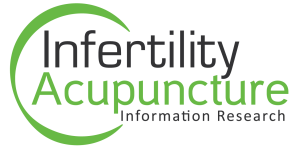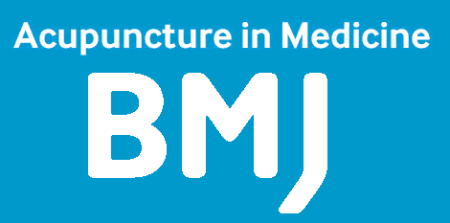IVF Frozen Embryo Transfer (FET) patients benefit from Acupuncture. This helps us understand how Acupuncture benefits fertility.
Electro stimulation on acupuncture points leading to the IVF transfer improves the quality/receptivity of the uterine lining. A study published in the latest issue of peer-reviewed British Medical Journal (Acupuncture in Medicine) found the rates of embryo implantation, clinical pregnancy and live birth rates were higher in patients who received acupuncture leading to the transfer. They also found significant measurable changes in the endometrium (uterine lining):
- Acupuncture improved the chances of triple-line pattern endometrial lining. It has been shown in studies that triple-line pattern is associated with good IVF outcome.
- Endometrial perfusion (blood supply to the uterine lining) is an important factor in the process of implantation. The study found greater endometrial and subendometrial vascularisation following a series of acupuncture treatments leading to embryo transfer.
- Acupuncture improved HOXA10 expression. Higher HOXA10 is associated with greater endometrial receptivity and good pregnancy outcomes. HOXA10 expression is lower in the uteri of women with hydrosalpinx, PCOS, and endometriosis.
How much acupuncture should you have to see those enhancements to your fertility? Women in this study had six acupuncture sessions per cycle for three menstrual cycles.
See the abstract of the study below.
Effect of transcutaneous electrical acupuncture point stimulation on endometrial receptivity in women undergoing frozen-thawed embryo transfer: a single-blind prospective randomised controlled trial
Acupunct Med doi:10.1136/acupmed-2014-010572
Original paper
Zhenhong Shuai1, Fang Lian2, Pengfei Li3, Wenxiu Yang2
+ Author Affiliations
1Shandong University of Traditional Chinese Medicine, Jinan, China
2Integrative Medicine Research Centre of Reproduction and Heredity, the Affiliated Hospital of Shandong University of Traditional Chinese Medicine, Jinan, China
3Department of Urology, Renji Hospital, Shanghai Jiaotong University School of Medicine, Shanghai, China
Correspondence to
Professor Fang Lian, Integrative Medicine Research Centre of Reproduction and Heredity, the Affiliated Hospital of Shandong University of Traditional Chinese Medicine, No 42 Wen Hua Xi Road, Jinan 250011, China; 562599739@qq.com
Received 1 April 2014
Revised 12 September 2014
Accepted 20 September 2014
Published Online First 10 October 2014
Conclusions In patients undergoing FET (Frozen Embryo Transfer), TEAS may have beneficial effects on endometrial HOXA10 expression and ultrasound markers of endometrial receptivity. These findings may explain the improvement in clinical outcome of FET associated with the use of TEAS.
Objective To evaluate the effect of transcutaneous electrical acupuncture point stimulation (TEAS) on endometrial HOXA10 protein expression and three-dimensional (3D) power Doppler ultrasound parameters as markers of endometrial receptivity in women undergoing frozen-thawed embryo transfer (FET).
Methods A total of 68 women undergoing FET were randomised to receive TEAS (ranscutaneous electrical acupuncture point stimulation) or mock TEAS at acupuncture points CV3, CV4 and SP6 and Zigong bilaterally. Both groups had six sessions per cycle for three menstrual cycles prior to the scheduled FET. Each session lasted 30?min and was repeated every other day. 3D power Doppler ultrasound parameters, HOXA10 protein expression and rates of embryo implantation, clinical pregnancy and live birth were compared.
Results There were no significant differences between the two groups in endometrial thickness or endometrial volume. The ultrasonographic endometrial triple-line pattern was present more often in theranscutaneous electrical acupuncture point stimulation group (p=0.002). The TEAS group had a greater endometrial and subendometrial vascularisation index (VI) than the mock TEAS group (p=0.001 and p<0.001, respectively) on 3D ultrasound and increased endometrial HOXA10 expression (p=0.001) immediately prior to FET. Subsequently, the rates of embryo implantation, clinical pregnancy and live birth rates were all higher in the TEAS group than in the mock TEAS group (p=0.024, p=0.038 and p=0.033, respectively).
Trial registration number ChiCTR-TRC-14004448.
Acupuncture has significant effect on chances of success with Frozen Embryo Transfer IVF patients.



